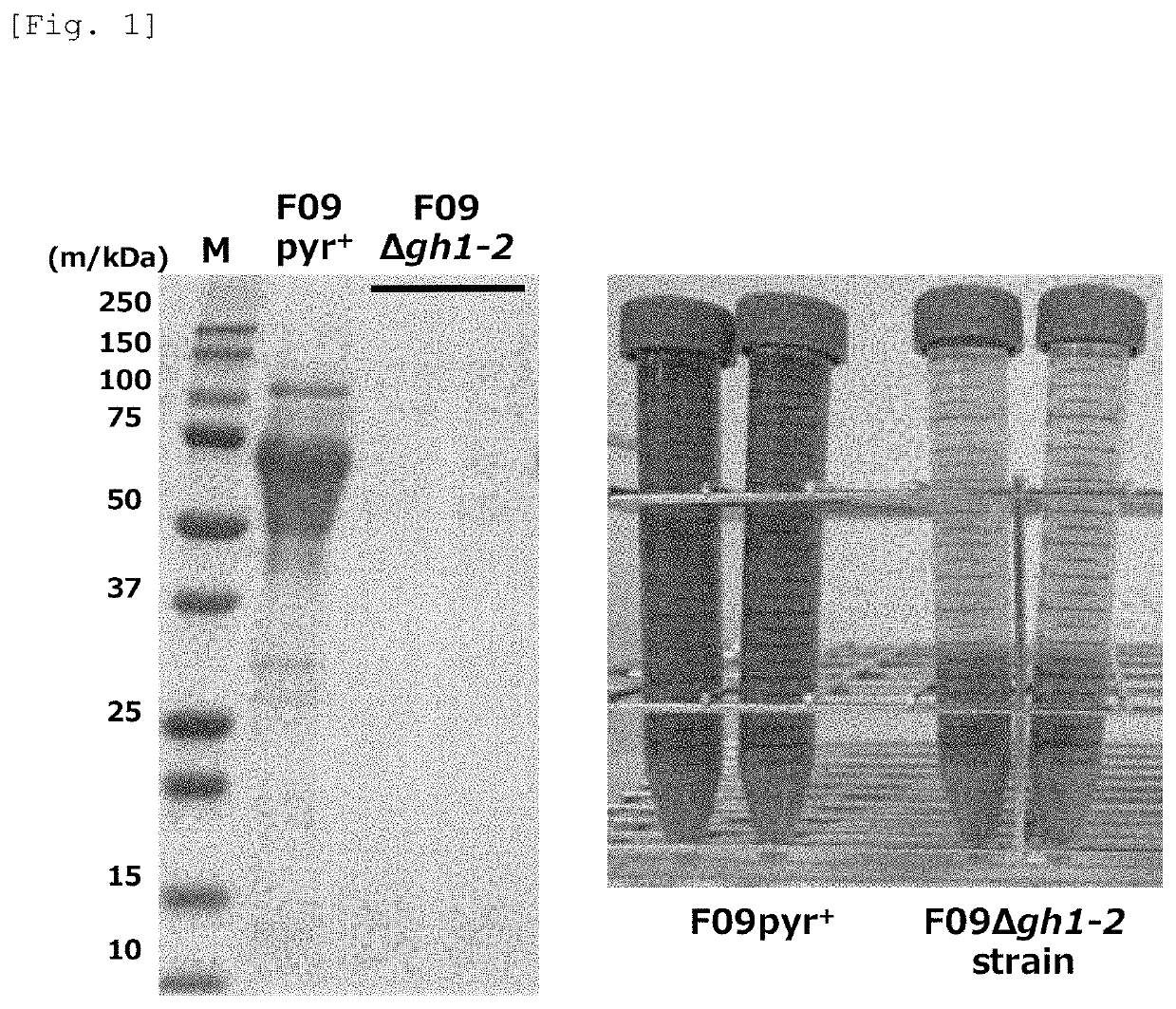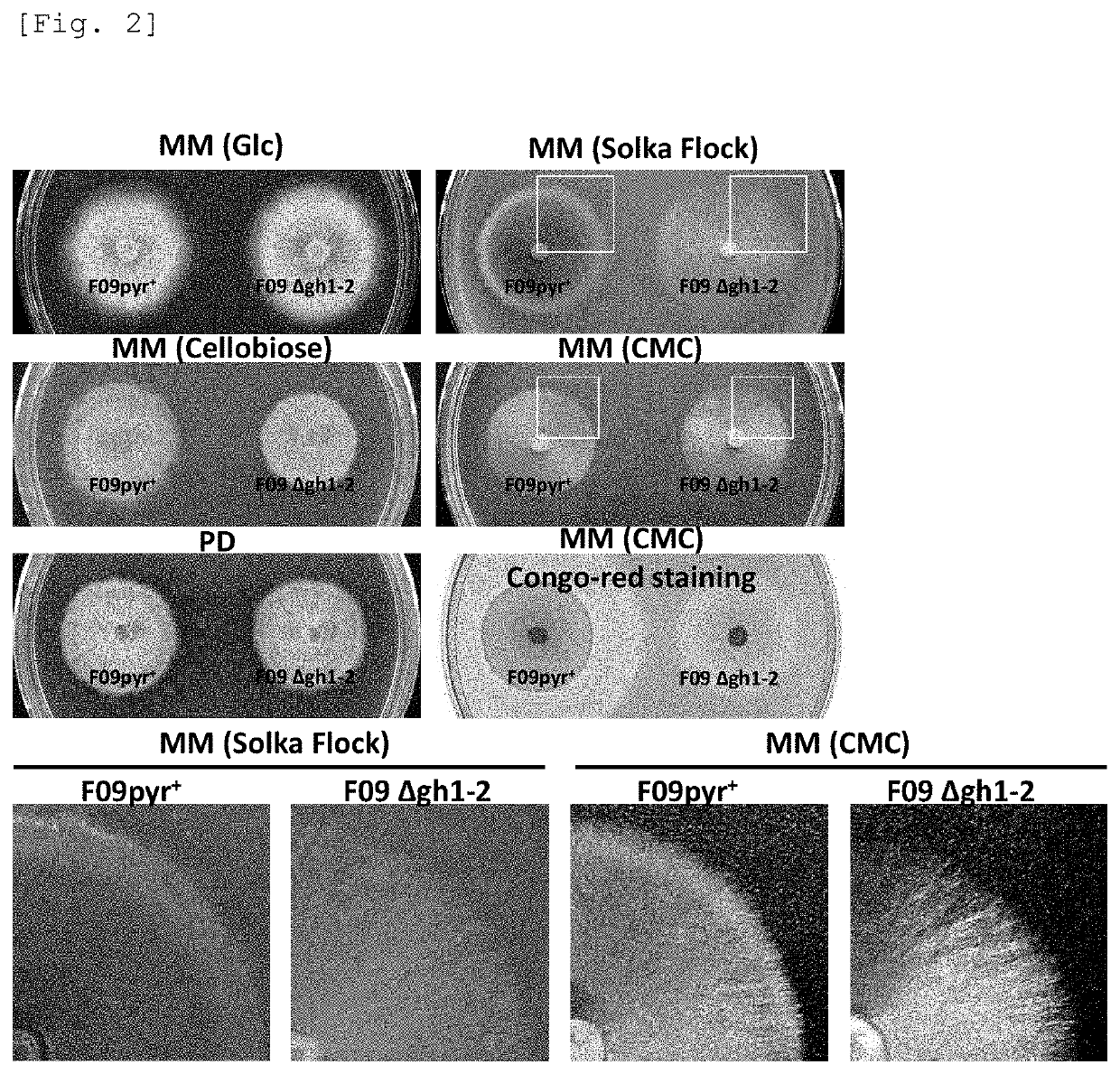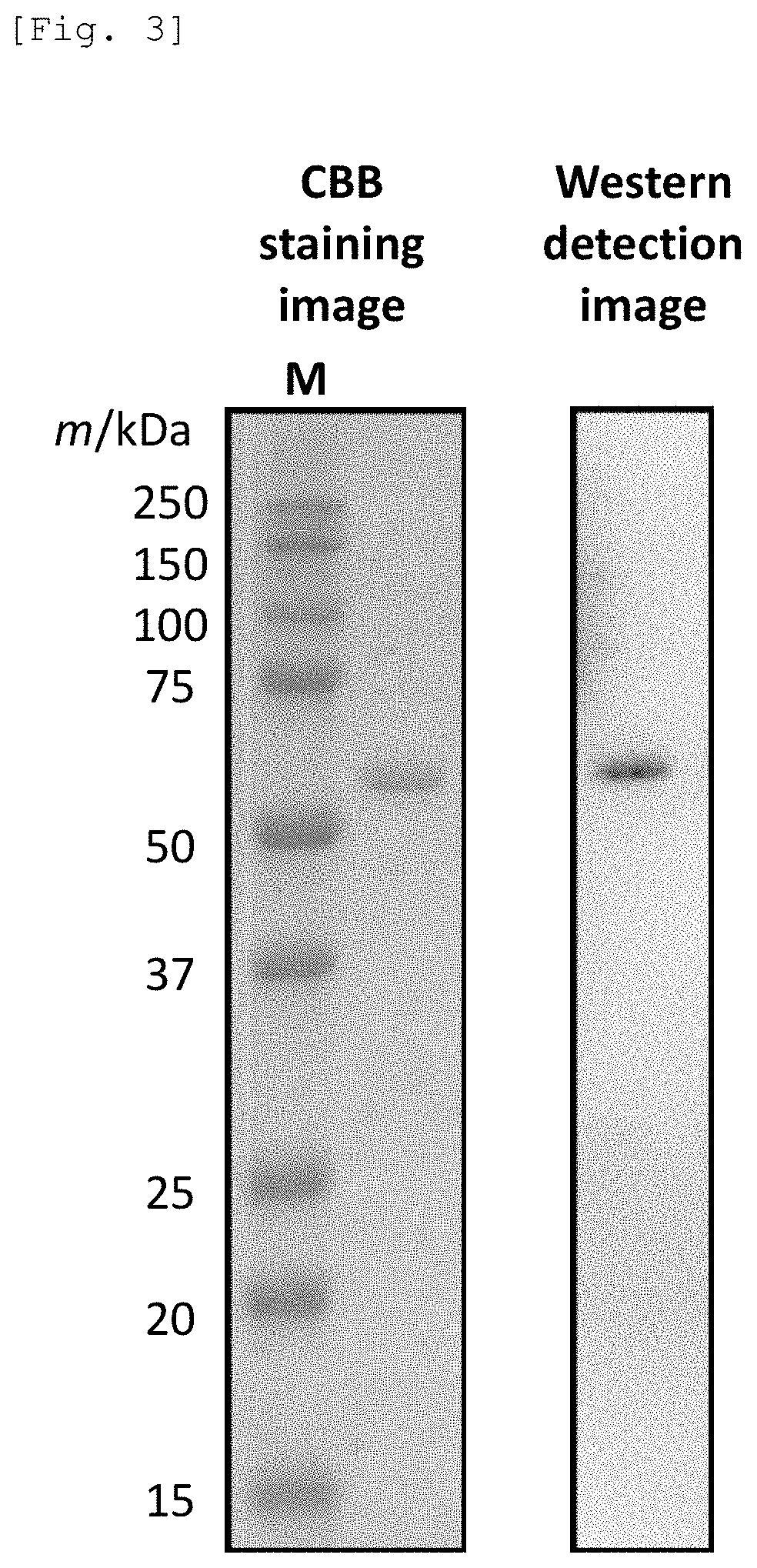Method for producing a protein and disaccharide using a Talaromyces cellulolyticus
a technology of talaromyces cellulolyticus and talaromyces cellulolyticus, which is applied in the field of producing a protein and disaccharide using a i>talaromyces cellulolyticus/i>, can solve the problems of not knowing whether cellulase production is induced and the disaccharide has not been reported
- Summary
- Abstract
- Description
- Claims
- Application Information
AI Technical Summary
Benefits of technology
Problems solved by technology
Method used
Image
Examples
examples
[0280]Hereinafter, the present invention will be more specifically explained with reference to the following examples. However, the scope is not limited by these examples.
[0281](1) Identification of the gh1-2 gene essential for cellulase production of T cellulolyticus
[0282]A gene is described that encodes a protein presumed to be a beta-glucosidase of the glucoside hydrolase family 1 (GH1), as a gene deeply involved in cellulase production for T cellulolyticus. Hereinafter, this is also referred to as “gh1-2”. Also, the protein encoded by the gh1-2 gene is also referred to as “GH1-2”.
[0283](1-1) Construction of T. Cellulolyticus Strains F09ΔGh1-2 and F09pyrF+
[0284]The strain F09Δgh1-2 was constructed from the parent strain T. cellulolyticus strain F09 (Japanese Patent Laid-open (Kokai) No. 2016-131533) by disruption of the gh1-2 gene (SEQ ID NO: 1) according to the following procedure. The strain F09 has a mutation (single nucleotide substitution) in a pyrF gene obtained from the p...
PUM
| Property | Measurement | Unit |
|---|---|---|
| temperature | aaaaa | aaaaa |
| temperature | aaaaa | aaaaa |
| temperature | aaaaa | aaaaa |
Abstract
Description
Claims
Application Information
 Login to View More
Login to View More - R&D
- Intellectual Property
- Life Sciences
- Materials
- Tech Scout
- Unparalleled Data Quality
- Higher Quality Content
- 60% Fewer Hallucinations
Browse by: Latest US Patents, China's latest patents, Technical Efficacy Thesaurus, Application Domain, Technology Topic, Popular Technical Reports.
© 2025 PatSnap. All rights reserved.Legal|Privacy policy|Modern Slavery Act Transparency Statement|Sitemap|About US| Contact US: help@patsnap.com



